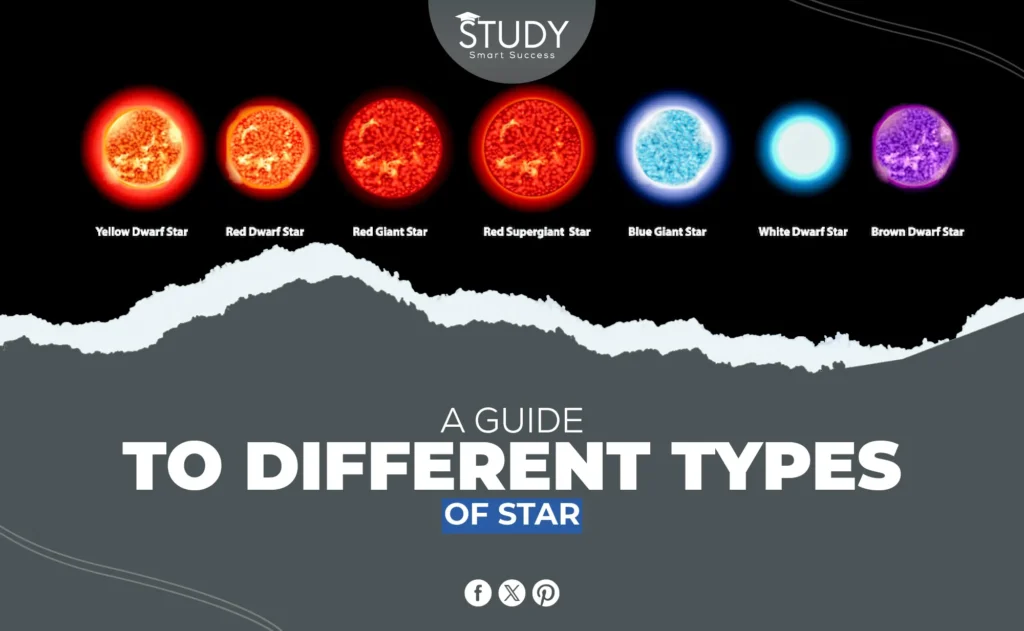Introduction
The cosmic ecology relies on these gigantic plasma spheres for heat, light, and heavier ingredients to produce planets and life. There would be no warmth, light, or complex elements like carbon, oxygen, or iron without stars, which are essential to life. Stars are factories that make everything we see.
Astronomers use stars to study the universe’s core processes. Scientists can understand galaxy evolution, element production, and the universe’s fate by analyzing different stars and their life cycles. Stars, from protostars to black holes, reveal the universe’s past, present, and future. We learn more about the complicated dynamics that shape solar systems and galaxies by studying stars.
Protostar
A protostar is the first stage of a star’s growth before it fuses nuclei together.
- Formation Process: Space’s chilly, dense molecular clouds birth protostars. A nearby supernova compresses the cloud, and gravity pulls gas and dust into a clump that heats up as it contracts. As gravity draws material into this protostar, it gains mass from the cloud.
- Evolution: The core of the protostar heats up. Pressure builds. Nuclear fusion ignites. The protostar becomes a main sequence star. Protostars have a disk around them. This disk contains material. Some of this material can form planets. It can also form moons and other bodies. This happens in a developing solar system.
Main Sequence Stars
Main sequence stars are stable and get their power from fusing hydrogen into helium in their cores.
- Examples: A lot of stars are like our Sun. It has been a stable main sequence star for about 4.6 billion years. Alpha Centauri and Sirius are also in the main sequence group of stars.
- Life Cycle: Main sequence stars have the longest and most stable lifespans. The main sequence duration of a star depends on its mass. Slow fusion allows red dwarfs to stay on the main sequence for trillions of years. Blue giant stars burn through fuel faster and may only endure a few million years before becoming red giants or supernovae.
Red Giants
Red giants are stars. They are in the later stages of life. They expand after using up their hydrogen fuel in the core.
Transition: In the main sequence, a star depletes its core hydrogen and fuses helium after millions or billions of years. The core contracts while the outer layers expand and cool, making the star become large and red. Even as its brilliance grows, the star’s temperature lowers, giving it a crimson glow.
Features:
- Size: Red giants can get hundreds of times bigger than they were in the main sequence phase. For example, if our Sun turned into a red giant, it would get bigger than Earth’s orbit.
- Future: Based on its original mass, a red giant may lose its outer layers, creating a planetary nebula and a white dwarf. A supernova may occur if the star is massive. Starting mass determines the star’s fate.
White Dwarfs
Hot, dense white dwarfs are what’s left of stars that have lost their upper layers and are no longer undergoing nuclear fusion.
Formation: After red giants shed their outer layers, their cores become white dwarfs. Although it cannot perform nuclear fusion, the white dwarf stays extremely hot due to residual heat from its earlier life phases. It starts at over 100,000 Kelvin and cools over billions of years.
Characteristics:
- Density: The average white dwarf is around the size of Earth but has the mass of the Sun. Due to its density, a cubic centimeter of white dwarf material weighs a ton.
- Cooling: White dwarfs cool and exude heat even without producing energy. Although the universe is too young for black dwarfs, they will become cold, dark dwarfs.
Neutron Stars
Neutron stars are very dense leftovers from massive stars that have burst in supernovae. Most of them are made up of neutrons.
Formation: A supernova collapses the core of a star with a mass more than eight times the Sun. Electrons and protons squeeze to make neutrons, creating a dense object where a teaspoon weighs billions of tons. The collapse generates massive energy, turning the item into a neutron star.
Properties:
- Magnetic Fields: Their magnetic fields are often a trillion times stronger than Earth’s. These fields can speed up particles almost as fast as light, sending out beams of radiation that we see as pulsars when they pass by Earth.
- Rotation: Some neutron stars spin hundreds of times per second very fast. This fast spinning happens because angular momentum stays the same when a star falls apart.
Black Holes
Black holes are places in spacetime where the pull of gravity is so strong that not even light can escape. They are made when the core of a big star falls apart further than the neutron star stage.
Formation: Black holes arise from huge stars, usually over 20 times the Sun’s mass. The core collapses under gravity, creating a singularity, a point of infinite density where physics breaks down. Beyond the event horizon, nothing can escape the singularity.
Features:
- Event Horizon: Event horizons are boundaries where the escape velocity equals light speed. Once something passes this threshold, it cannot escape, making black holes invisible save for gravity.
- Accretion Disks: Matter too close to a black hole produces an accretion disk, rushing inward and heating up around the event horizon. Telescopes detect X-rays and other high-energy radiation from these disks.
Supernovae
When a huge star explodes, it’s called a supernova. It’s a bright, powerful explosion that can briefly light up galaxies.
Types of Supernova:
- Type I: In systems with two stars, these supernovae happen when a white dwarf takes in matter from its partner star, finally leading to a runaway fusion reaction that blows up.
- Type II: A core-collapse supernova happens when a single huge star falls apart under its own weight after using up all of its nuclear fuel. This is called a type II supernova.
Importance: Supernovae enrich the interstellar medium by scattering carbon, oxygen, and iron, allowing new stars and planets to form. They create neutron stars and black holes depending on the progenitor star’s mass.
Brown Dwarfs
Substellar objects called brown dwarfs are too small to support hydrogen fusion but too big to be called planets.
Characteristics:
- Mass and Size: Brown dwarfs have masses 13–80 times Jupiter’s, yet electron degeneracy pressure keeps their size constant. They are larger than planets but not huge enough to fuse and create stars.
- Failed Stars: Brown dwarfs are hard to spot because they emit predominantly infrared light. Many call them “failed stars” because they lack the mass to start fusion.
- Role in Star Formation: Brown dwarfs are believed to form in a manner akin to stars, originating from the collapse of gas and dust clouds. However, they do not accumulate sufficient mass to enter the main sequence phase.
Conclusion
Our understanding of the universe depends on all stars. The evolution of stars from protostars to supernovae is distinct. Star analysis can reveal the universe’s past, element production, and galaxy futures. From main sequence stars’ long, stable lives to black holes’ massive gravitational forces, stars fascinate scientists and humans. Diversity in stars illuminates the night sky and reveals cosmic processes.


